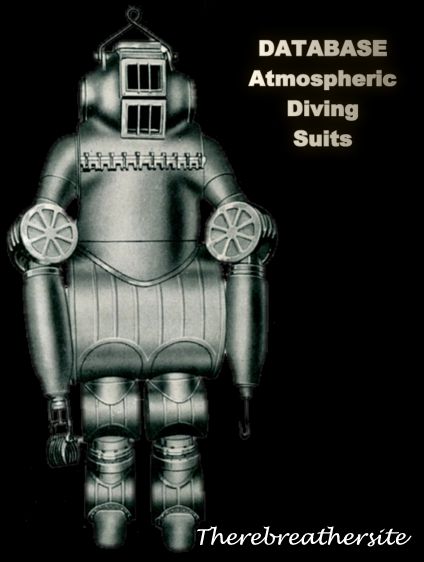
M. de Pluvy of France made one of the first regenerative type of atmospheric diving suits. Mr. Pluvy claimed to have made several dives to 100 meters with his suit. Although the joints were made of leather and rubber the suit seems to have worked.
In several descriptions there are explanations that the scrubbers both removed carbon dioxide and produced oxygen. For this process electrical energy was feed to the system from the surface. Regulating valves kept the pressure in the helmet constant. It seems to me that the valves were electrically actuated, but the oxygen production and carbon dioxide extraction were mechanical.
I would like to express my thanks to Mr. Richard Walsby for informing me about the missing Pluvy information. Also I would like to ask to sent me any information you have about Mr. M. de Pluvy. I will add it to this ADS database. Any information about AD suits before 1906 not mentioned here are most welcome to complete the database!
A novelty in the field of diving equipment is the invention of M. de Pluvy, a leading hydrographic engineer from Paris. This invention is the subject of our cover illustration and promises to be of great value in salvage operations. As De Pluvy has many years of experience in diving operations, there is no doubt that the device is of practical value. He uses a metal diver’s suit that is somewhat modelled on the old coat of arms. It is made of light and strong sheet steel with a thickness varying from 0.2 to 0.3 inches, depending on the position of the parts. The joints and coupling points are made of pressed leather and rubber, and a special form of hydraulic joint is used. Attached to the top of the armour is the helmet, which is the main feature of the device. The air is not supplied to the diver from outside, as is usual, but the air he breathes is led through a tube to a special regeneration chamber, which contains certain chemicals that renew the supply of oxygen, and the air is then led through another tube to the interior of the helmet. The air renewal device is located in a pair of cylindrical chambers attached to each side of the helmet. Control valves keep the air pressure in the helmet at the right level and always constant, regardless of the depth below the surface. Ascending and descending is done by a drum and a cable driven by an electric motor. At the same time, the cable serves to conduct the current required for the breathing apparatus. The diver communicates with the surface by means of a telephone, and a number of wires run up from the harness to a set of coloured lights that show how the various parts work. There are many advantages to this new device, and we expect to give a more complete and illustrated description of this interesting device. Mr. de Pluvy has personally been able to descend to great depths, and during the 115 descents he has already made with the new diving suit, he has reached depths ranging from 150 to 300 feet. This is far more than the depth that an ordinary diver can reach.
The Pluvy patent can be found here: https://worldwide.espacenet.com/patent/search/family/001409519/publication/FR361910A?q=pn%3DFR361910A
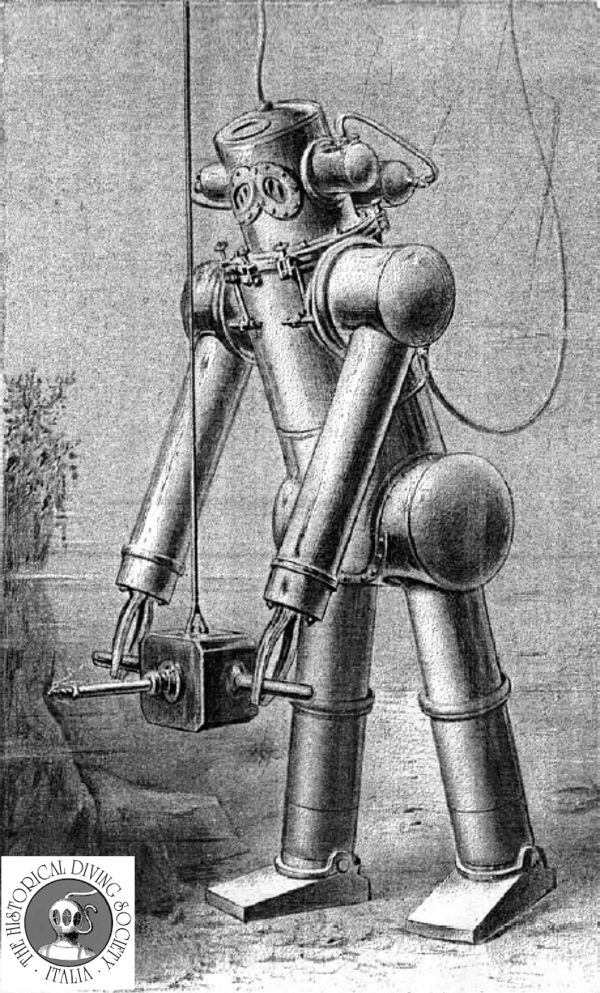
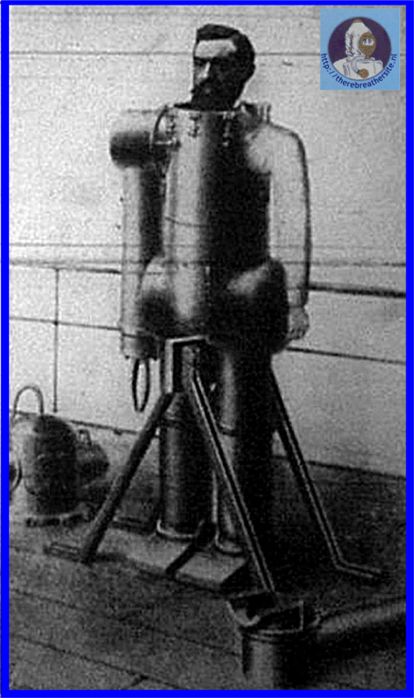
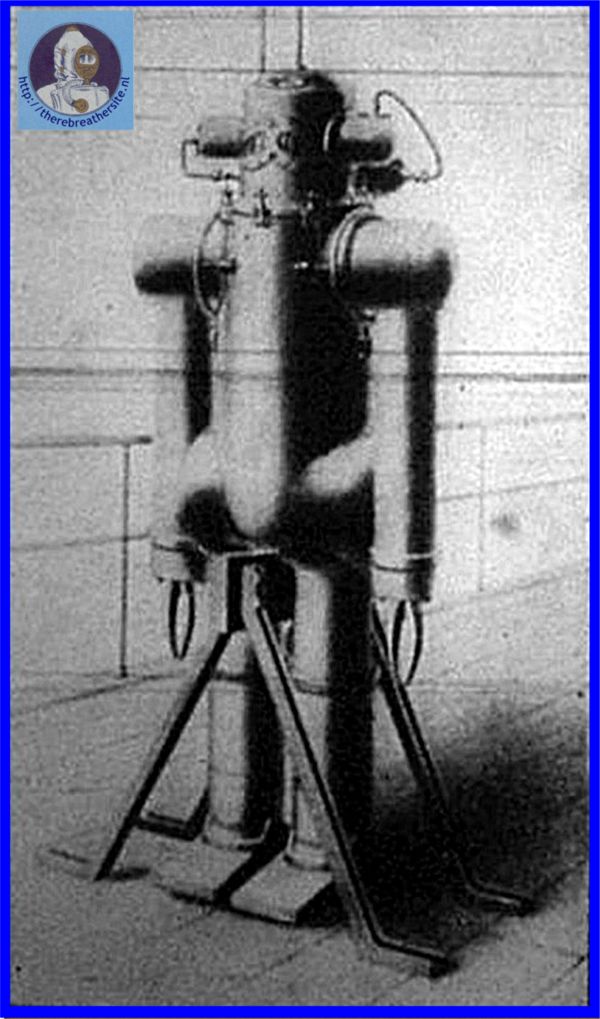
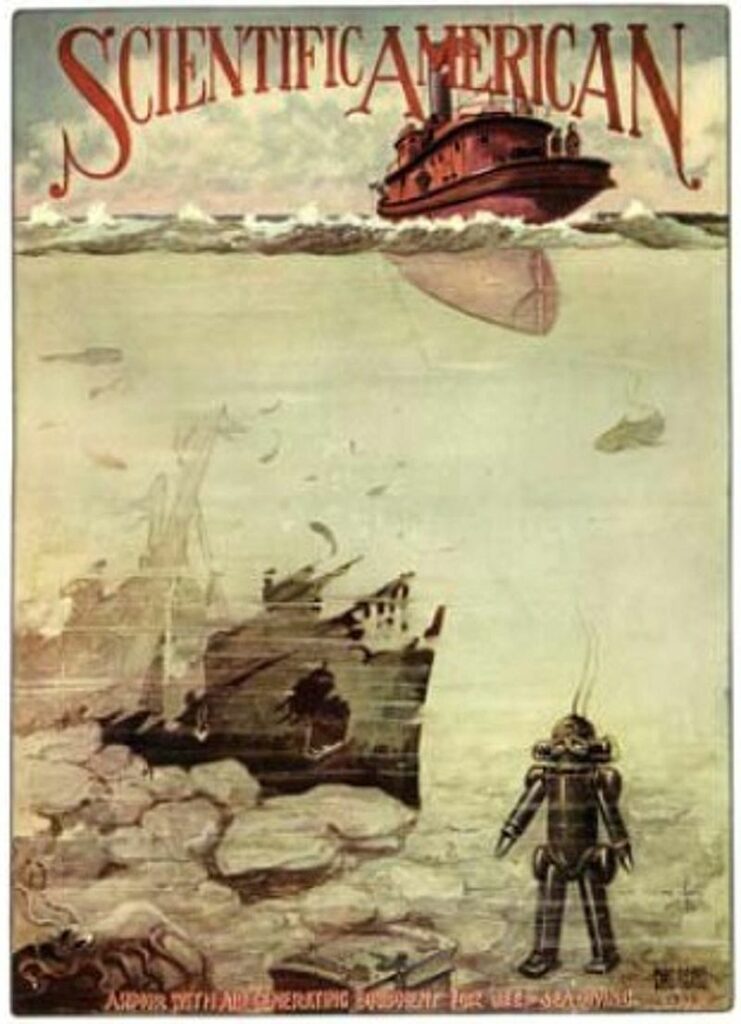
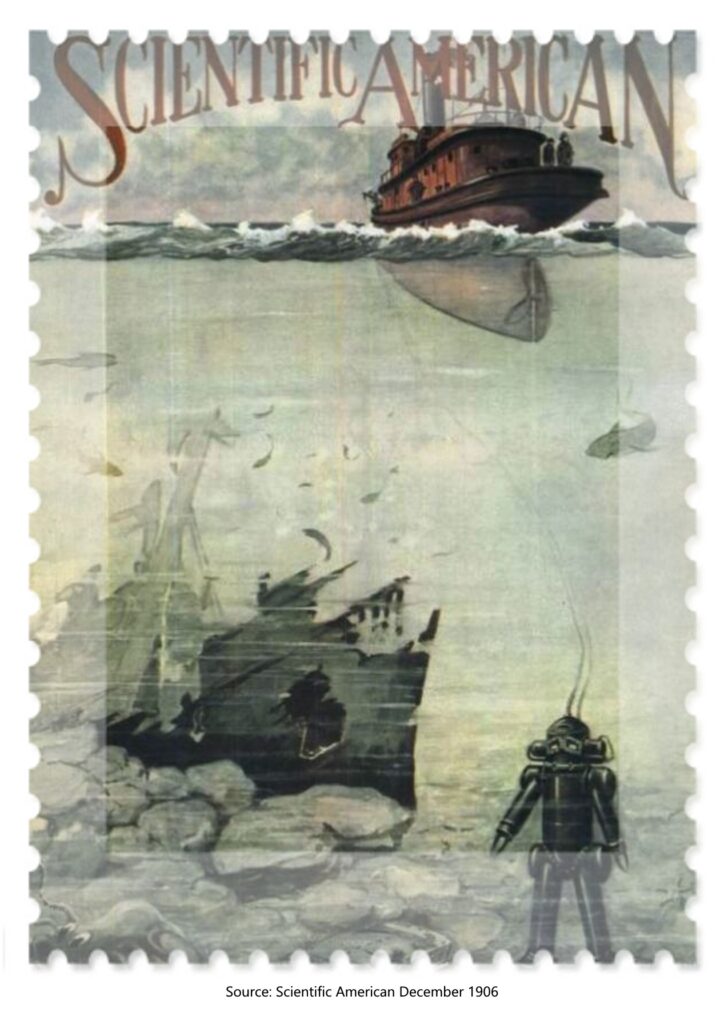

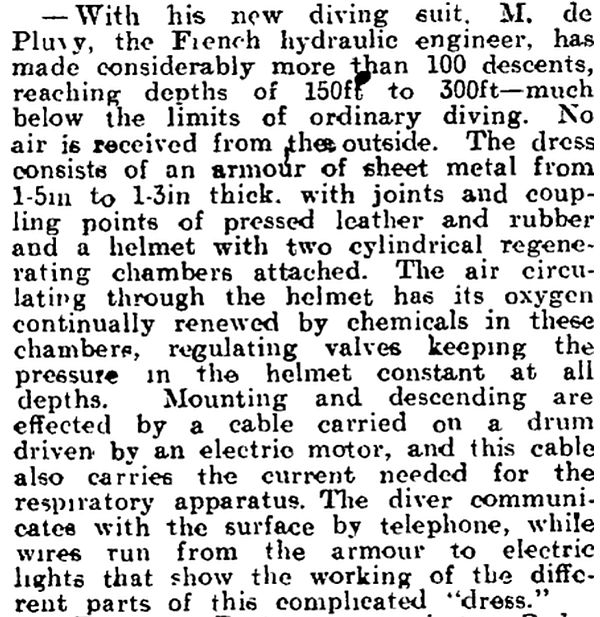
De Pluvy worked together with the Frenchman Charles Pecourt. Pecourt was the inventor of the helmet that he patented separately in 1904. Given the success of the Pluvy, the helmet with an electric ventilation system and built-in telephone appears to have actually worked. The built-in fan controlled a pressure-reducing valve that released gas according to depth and increasing water pressure. The fans ensured a good flow of fresh air. Pecourt’s patent is described further below.

Therebreathersite was founded by Jan Willem Bech in 1999. After a diving career of many years, he decided to start technical diving in 1999. He immediately noticed that at that time there was almost no website that contained the history of closed breathing systems. The start for the website led to a huge collection that offered about 1,300 pages of information until 2019. In 2019, a fresh start was made with the website now freely available online for everyone. Therebreathersite is a source of information for divers, researchers, technicians and students. I hope you enjoy browsing the content!
